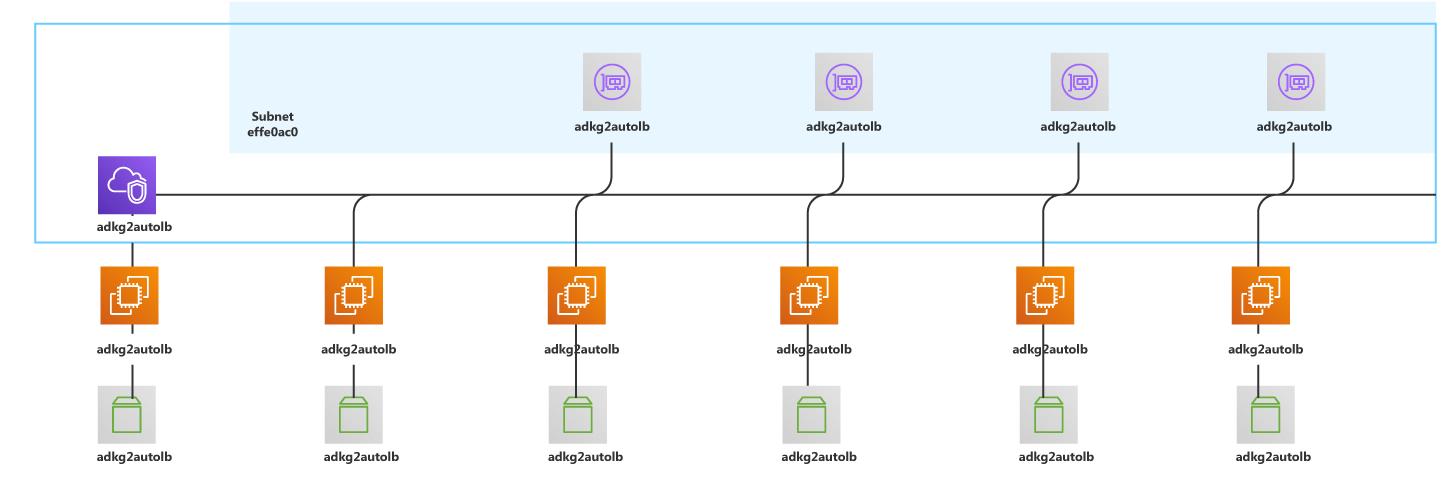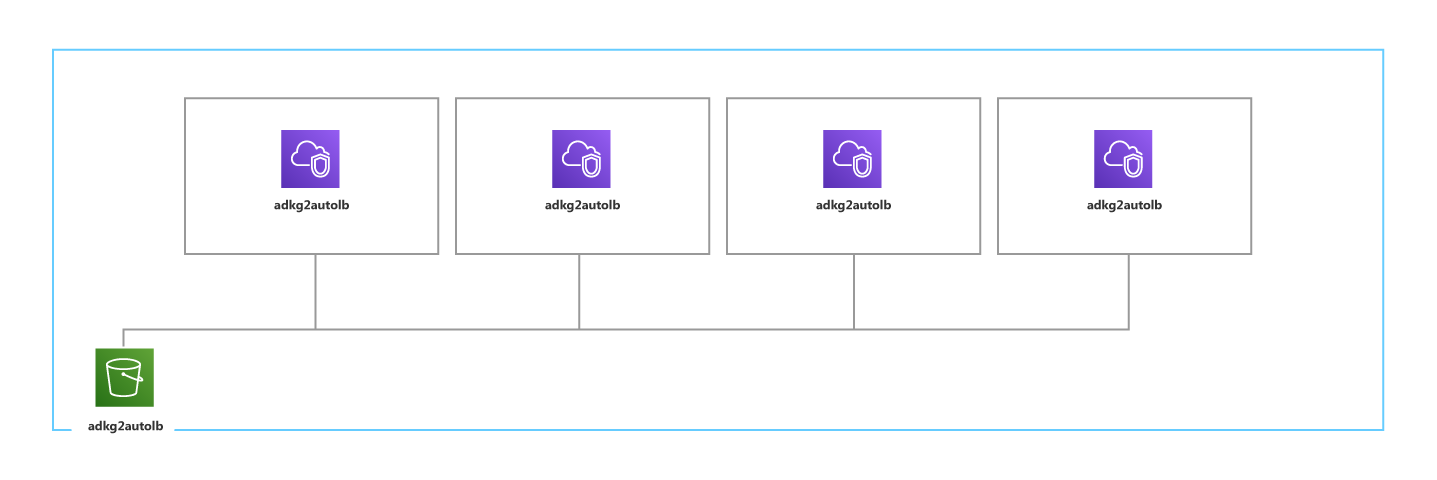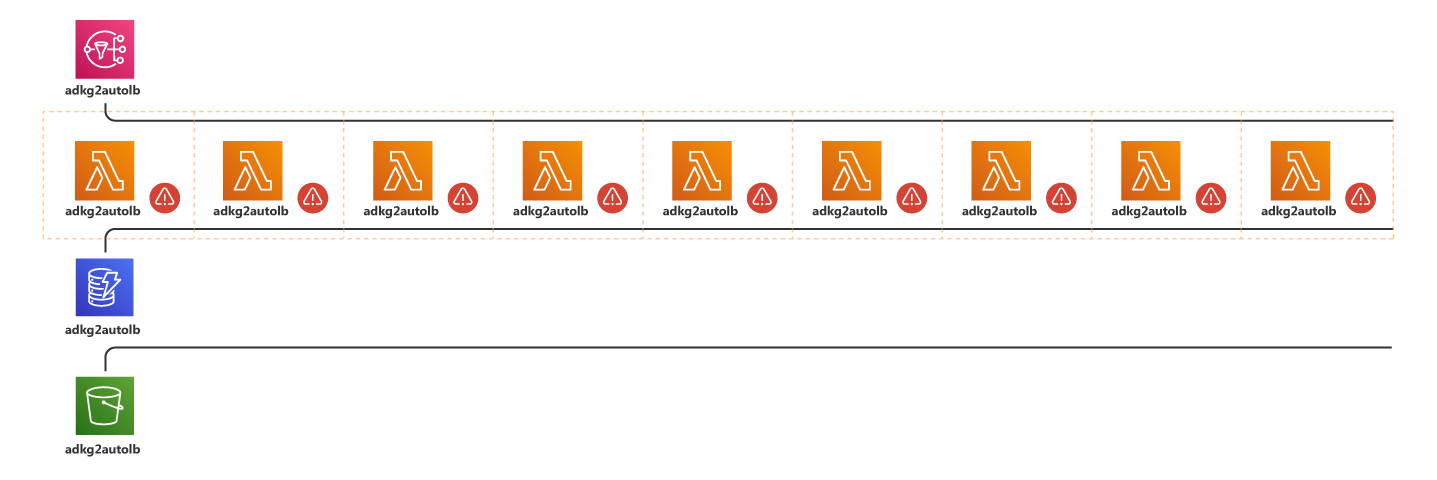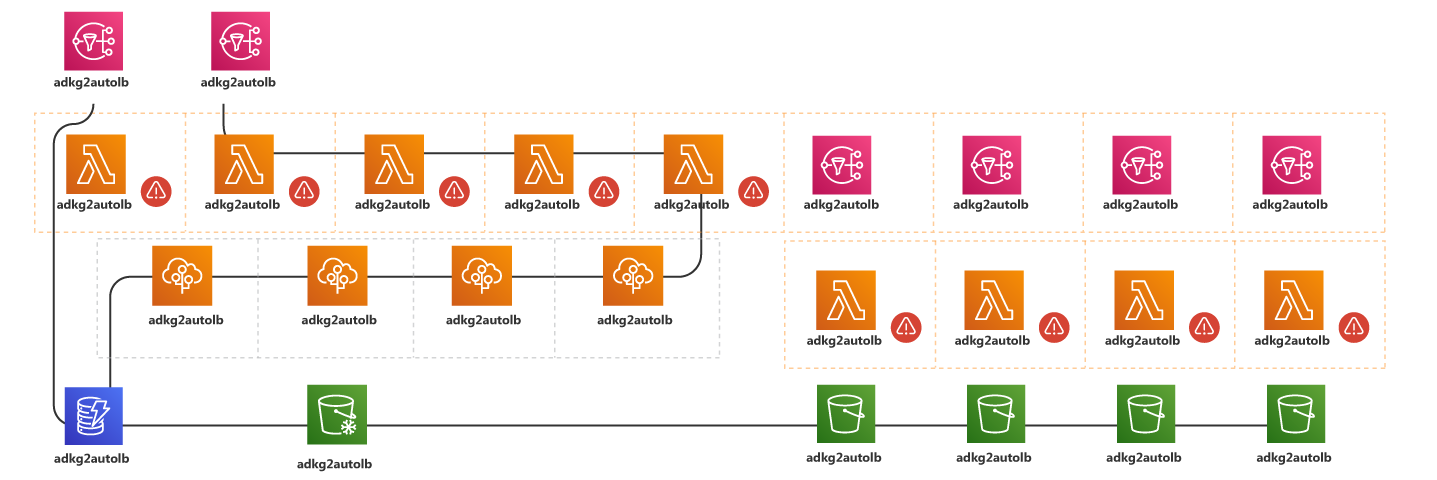The 25 Most Used AWS icons Explained!
Out of the hundreds of AWS architecture diagrams, how many do you actually know well, or the name of? Maybe an expert cloud architect will be able to navigate the complicated AWS diagrams, however, a junior architect might need help. If you are new to the world of enterprise clouds, this article will greatly help you. Cloudockit, one of the leading experts in cloud diagramming, has you covered.
Please note that the information for the article was taken from various online sources. A full list of sources is available after the article if you wish to continue your research.
Virtual Machines & Networks

AWS VPC icon
VPC
Amazon Virtual Private Cloud (Amazon VPC) enables you to launch AWS resources into a virtual network that you’ve defined. This virtual network closely resembles a traditional network that you’d operate in your own data center, with the benefits of using the scalable infrastructure of AWS.

AWS Elastic Network icon
Elastic Network Interface Card
An elastic network interface (referred to as a network interface in this documentation) is a logical networking component in a VPC that represents a virtual network card. You can create and configure network interfaces in your account and attach them to instances in your VPC.

AWS EC2 icon
EC2 Instance
An EC2 instance is a virtual server in Amazon’s Elastic Compute Cloud (EC2) for running applications on the Amazon Web Services (AWS) infrastructure. AWS is a comprehensive, evolving cloud computing platform; EC2 is a service that allows business subscribers to run application programs in the computing environment.

AWS Resources icon
Resource
In AWS, a resource is an entity that you can work with. Examples include an Amazon EC2 instance, an AWS CloudFormation stack, or an Amazon S3 bucket. If you work with multiple resources, you might find it useful to manage them as a group rather than move from one AWS service to another for each task.

AWS Internet Gateway icon
Internet Gateway
An internet gateway is a horizontally scaled, redundant, and highly available VPC component that allows communication between instances in your VPC and the internet. It therefore imposes no availability risks or bandwidth constraints on your network traffic.

Beanstalk Applications

AWS Elastic Beanstalk icon
Elastic Beanstalk
AWS Elastic Beanstalk is an easy-to-use service for deploying and scaling web applications and services developed with Java, . NET, PHP, Node. js, Python, Ruby, Go, and Docker on familiar servers such as Apache, Nginx, Passenger, and IIS.

AWS S3 icon
S3 Bucket
A bucket is a logical unit of storage in Amazon Web Services (AWS) object storage service, Simple Storage Solution (S3). Buckets are used to store objects, which consist of data and metadata that describes the data.

Lambda Functions

AWS Lambda icon
AWS Lambda
AWS Lambda is an event-driven, serverless computing platform. It is a computing service that runs code in response to events and automatically manages the computing resources required by that code.

AWS SNS icon
Simple Notification Service (SNS)
Amazon Simple Notification Service (SNS) is a highly available, durable, secure, fully managed pub/sub messaging service that enables you to decouple microservices, distributed systems, and serverless applications.

AWS Dynamo DB icon
DynamoDB
Amazon DynamoDB is a fully managed NoSQL database service that provides fast and predictable performance with seamless scalability. With DynamoDB, you can create database tables that can store and retrieve any amount of data and serve any level of request traffic.

Internet of Things (Iot)

AWS IoT Rule icon
IoT Rule
An AWS IoT rule consists of an SQL SELECT statement, a topic filter, and a rule action. Devices send information to AWS IoT by publishing messages to MQTT topics.

AWS IoT Core icon
IoT Core
AWS IoT Core is a platform that enables you to connect devices to AWS Services and other devices, secure data and interactions, process and act upon device data, enables applications to interact with devices even when they are offline and that allows you to produce low-cost Alexa built-in devices.
Let Cloudockit auto-generate your cloud diagrams
Other

AWS Glacier icon
Glacier
Amazon Glacier is an online file storage web service that provides storage for data archiving and backup.

AWS CloudFront icon
Cloudfront
Amazon CloudFront is a web service that speeds up distribution of your static and dynamic web content, such as . html, . css, . js, and image files, to your users. CloudFront delivers your content through a worldwide network of data centers called edge locations.

AWS Auto Scaling icon
Auto Scaling
AWS Auto Scaling lets you build scaling plans that automate how groups of different resources respond to changes in demand. You can optimize availability, costs, or a balance of both. AWS Auto Scaling automatically creates all of the scaling policies and sets targets for you based on your preference.

AWS Elastic File icon
Amazon Elastic File
Amazon Elastic File System (Amazon EFS) provides a simple, scalable, fully managed elastic NFS file system for use with AWS Cloud services and on-premises resources.


AWS EB2 icon
EBS Volume
An Amazon EBS volume is a durable, block-level storage device that you can attach to one instance or to multiple instances at the same time. You can use EBS volumes as primary storage for data that requires frequent updates, such as the system drive for an instance or storage for a database application.

AWS Customer Gateway icon
AWS Customer Gateway
A customer gateway is a resource that is installed on the customer side and is often linked to the provider side. It provides a customer gateway inside a VPC. These objects can be connected to VPN gateways via VPN connections, and allow you to establish tunnels between your network and the VPC.

AWS Route Table icon
Route Table
A gateway route table supports routes where the target is local (the default local route) or an elastic network interface (network interface) in your VPC. When the target is a network interface, the following destinations are allowed: The entire IPv4 or IPv6 CIDR block of your VPC.

AWS API Gateway icon
API Gateway
Amazon API Gateway is an AWS service for creating, publishing, maintaining, monitoring, and securing REST, HTTP, and WebSocket APIs at any scale. API developers can create APIs that access AWS or other web services, as well as data stored in the AWS Cloud.

AWS Load Balancer icon
Classic Load Balancer
Classic Load Balancer provides basic load balancing across multiple Amazon EC2 instances and operates at both the request level and connection level. Classic Load Balancer is intended for applications that were built within the EC2-Classic network.

AWS Application Load Balancer icon
Application Load Balancer
The Application Load Balancer is a feature of Elastic Load Balancing that allows a developer to configure and route incoming end-user traffic to applications based in the Amazon Web Services (AWS) public cloud.

AWS Network Load Balancer icon
Network Load balancer
The Network Load Balancing (NLB) feature distributes traffic across several servers by using the TCP/IP networking protocol. By combining two or more computers that are running applications into a single virtual cluster, NLB provides reliability and performance for web servers and other mission-critical servers.

AWS VPN icon
VPN Connection
AWS Virtual Private Network (AWS VPN) lets you establish a secure and private encrypted tunnel from your network or device to the AWS global network.
How Do Your AWS Icons Interact With Each Other in Your Architecture Diagrams
Cloudockit’s AWS architecture diagram tool is the simplest way of diagramming your cloud components. The diagrams are fully editable and can be read with Visio, Draw.io and Lucidchart. The software creates diagrams organized in so many ways that you will find the one that fits your needs. Furthermore, Cloudockit enables you to also diagram and document your on-premise/multi-cloud environments.
The main idea is to never create your own diagrams, the time spent creating them could be used to more useful tasks.
Sources
Amazon Elastic File: https://aws.amazon.com/efs/
Application Load Balancer: https://searchaws.techtarget.com/definition/application-load-balancer
Auto scaling: https://aws.amazon.com/autoscaling/
AWS Lambda: https://en.wikipedia.org/wiki/AWS_Lambda
Elastic Beanstalk: https://aws.amazon.com/elasticbeanstalk/
Classic Load Balancer: https://aws.amazon.com/elasticloadbalancing/
Cloudfront: https://docs.aws.amazon.com/AmazonCloudFront/latest/DeveloperGuide/Introduction.html
Customer Gateway: https://www.edureka.co/community/44768/what-is-virtual-private-gateway-and-customer-gateway
EBS Volume: https://docs.aws.amazon.com/AWSEC2/latest/UserGuide/ebs-volumes.html
EC2 Instance: https://searchaws.techtarget.com/definition/Amazon-EC2-instances
Elastic Network Interface Card: https://docs.aws.amazon.com/AWSEC2/latest/UserGuide/using-eni.html
Glacier: https://en.wikipedia.org/wiki/Amazon_Glacier
IoT Core: https://aws.amazon.com/iot-core/features/
IoT Rule: https://docs.aws.amazon.com/iot/latest/developerguide/iot-rules-tutorial.html
Network Load balancer: https://docs.microsoft.com/en-us/windows-server/networking/technologies/network-load-balancing
Resource: https://docs.aws.amazon.com/ARG/latest/userguide/welcome.html
Route Table: https://docs.aws.amazon.com/vpc/latest/userguide/VPC_Route_Tables.html
S3 Bucket: https://www.quora.com/What-is-bucket-AWS-bucket
Simple Notification Service: https://aws.amazon.com/sns/?whats-new-cards.sort-by=item.additionalFields.postDateTime&whats-new-cards.sort-order=desc
VPC: https://docs.aws.amazon.com/vpc/latest/userguide/what-is-amazon-vpc.html
VPN Connection: https://docs.aws.amazon.com/vpn/latest/s2svpn/your-cgw.html